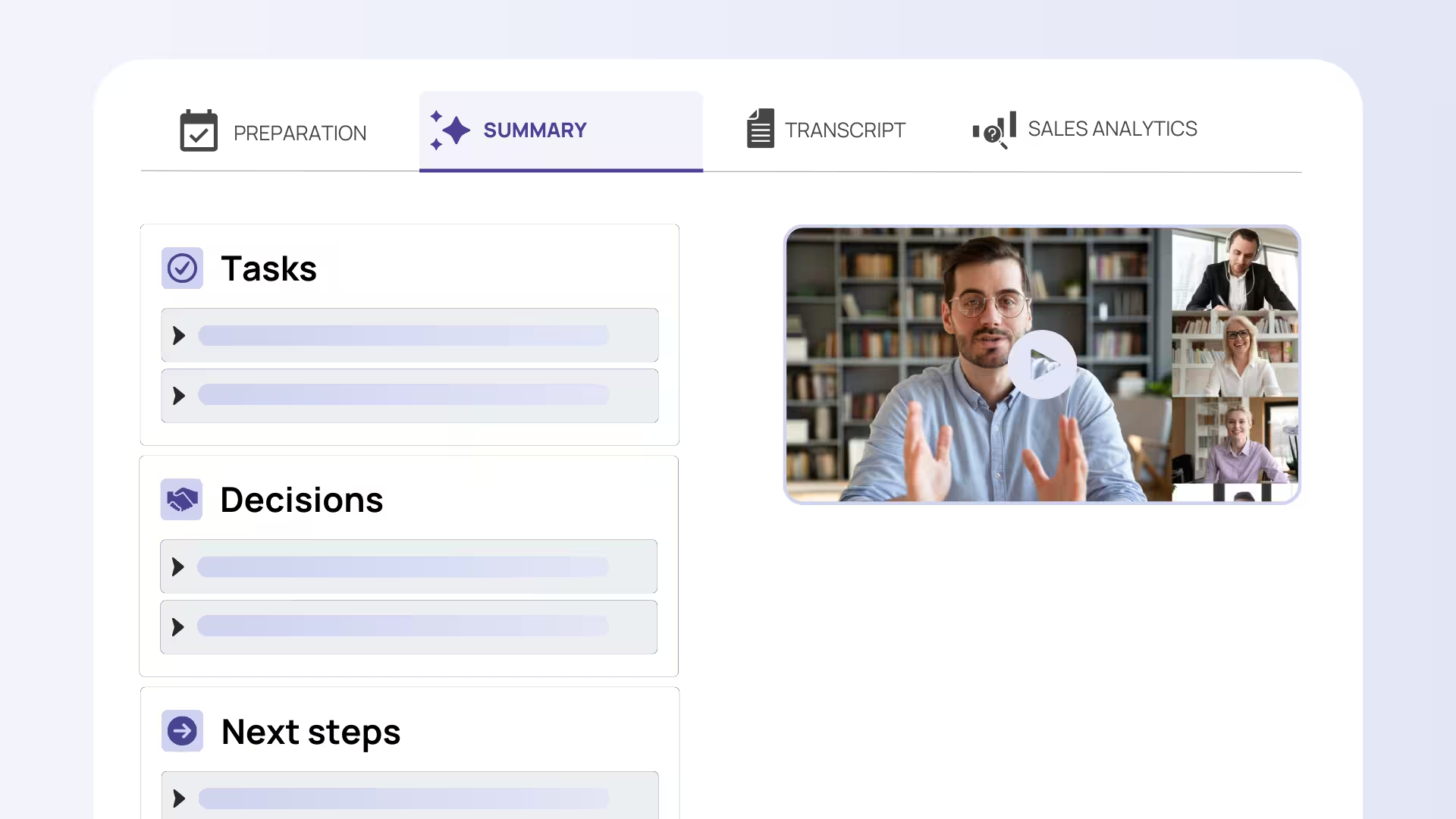Table of Contents
Structured interviews are the gold standard for fair and objective selection processes. While traditional conversations are often influenced by sympathy or gut feelings, structured interviews rely on systematic procedures that offer equal opportunities to all participants. Especially in times of skilled labor shortages and increasing demands for transparency, they are becoming indispensable for companies of all sizes.
The advantages are clear: higher objectivity, better predictive power for professional success, and legal security. At the same time, modern technologies and cultural diversity bring new challenges that require clever solution approaches.
What are Structured Interviews? – Definition and Characteristics
The Exact Definition
A structured interview is a systematically constructed conversation where all candidates receive the same questions in identical order. While this may initially sound rigid, it creates the foundation for objective comparisons. Each answer is evaluated using predefined rating scales – similar to an exam with established evaluation criteria.
Imagine you're looking for a new sales representative. While in an unstructured conversation you might spontaneously chat about hobbies, in a structured interview you specifically ask: "Describe a situation where you convinced a skeptical customer." Every applicant receives this question – and you evaluate the answers using the same criteria.
Characteristics and Distinction from Unstructured Interviews
The difference from casual conversations is considerable. Structured interviews follow a fixed plan, document answers systematically, and evaluate according to objective standards. Unstructured interviews, on the other hand, thrive on spontaneous inspirations and personal impressions.
This standardization makes structured interviews particularly valuable for application processes, scientific studies, or anywhere objectivity and comparability are crucial. They are the tool of choice when you need to make legally sound and fair decisions.
The Process of a Structured Interview – Step by Step
Preparation and Planning
Good preparation is essential. First, you develop a standardized question catalog that covers the most important competencies for the position. Situational questions like "How would you react if a project were at risk shortly before the deadline?" test problem-solving abilities. Behavioral questions like "Tell me about a time when you had to motivate a difficult team member" illuminate past performance.
In parallel, you define evaluation criteria. A 5-point scale might look like this: 1 = insufficient, 3 = average, 5 = excellent. Each point should be clearly described so that different interviewers arrive at similar evaluations.
Training the interviewers is crucial. Even experienced executives benefit from training that highlights typical sources of error like the halo effect or confirmation bias.
Conducting the Interview
The actual conversation follows a clear structure. After the greeting, you explain the procedure to candidates: "Today we're asking all applicants the same questions to enable fair comparisons." This transparency appears professional and reduces nervousness.
You ask the questions in the established order. Take detailed notes of the answers – here modern tools like Sally can help by automatically transcribing conversations and highlighting important statements. This allows you to focus fully on the conversation.
Follow-up questions are allowed but should be the same for all candidates. If someone gives only a superficial answer, you ask: "Can you describe that more specifically?" You then ask this follow-up question to all others as well.

Follow-up and Evaluation
Immediately after the interview, you evaluate each answer using the predefined scales. This immediate evaluation prevents impressions from mixing or fading. Also document special observations or doubts – they help later with the decision.
Comparing candidates becomes much easier through standardized evaluations. Instead of vague impressions like "Candidate A was more likeable," you have concrete numbers: "Candidate A achieved 4 points in problem-solving, Candidate B only 2 points."
Advantages of Structured Interviews – Why This Method Convinces
The research is clear: structured interviews are significantly superior to unstructured ones. They predict professional success up to 50% better than casual conversations. This is due to the systematic approach that minimizes coincidences and sympathy effects.
Particularly valuable is the reduction of discrimination. When all candidates receive the same questions and are evaluated according to the same criteria, personal prejudices have less influence. This protects not only the applicants but also your company from legal problems.
The documentation of structured interviews is another plus point. If a personnel decision is later questioned, you can demonstrably trace the entire selection process. This transparency creates trust among all participants.
At the same time, candidates benefit from fair treatment. They know that their performance, not the interviewer's mood, determines their success.
Practical Tips and Innovative Approaches for Structured Interviews
Typical Questions and Question Techniques
Good interview questions are concrete and job-related. Instead of "Are you a team player?" you ask: "Describe a situation where you led different opinions in a team to a common solution." These behavioral questions provide much more meaningful answers.
For international teams, culturally sensitive questions are important. While German candidates often appreciate direct feedback, other cultures may prefer more indirect approaches. For example, ask: "How do you handle different working styles in a multicultural team?"
Situational questions test candidates' thinking: "An important customer complains about delays. How do you proceed?" There are often multiple correct answers here – the reasoning is what matters.
Use of Modern Technologies for Support
Digital tools are revolutionizing structured interviews. Platforms can automatically display questions in the right order, record answers, and perform initial analyses. Sally, for example, automatically transcribes conversations and can highlight important statements, significantly facilitating follow-up work.
AI-supported analysis recognize patterns in answers and can even provide hints about soft skills like communication ability or stress resistance. Important here: technology supports your decision but doesn't replace it.
Data protection has top priority. All tools must be GDPR-compliant and inform candidates about recordings. Transparency creates trust and prevents legal problems.

Training and Education of Interviewers
Even experienced executives benefit from interviewer training. Typical content includes recognizing bias, proper questioning techniques, and objective evaluation of answers. Particularly important: handling difficult situations, such as when candidates are nervous or evasive.
Regular refresher courses maintain quality levels. New findings from research or changed legal frameworks are incorporated into practice in a timely manner.
Feedback and Improvement Processes
Good interview processes continuously evolve. Regularly analyze how hired candidates perform on the job. If certain questions don't distinguish between successful and less successful employees, revise them.
Also get feedback from candidates. Their perspective helps you improve the process and strengthen your company's image. Many applicants appreciate the fairness of structured interviews and report positively about them.
Areas of Application and Special Challenges
Typical Fields of Use
Structured interviews prove themselves wherever objective selection is important. In personnel recruitment, they are particularly valuable for positions with many applicants. They are also indispensable for leadership positions where wrong decisions become expensive.
In research, they enable comparable data collection. Market researchers use them for customer surveys, psychologists for diagnostic conversations. Everywhere objectivity and comparability count, structured interviews are the first choice.
Cultural Differences and Their Consideration
International teams bring special challenges. What is considered self-confident in one culture appears arrogant in another. Therefore, you should culturally adapt questions and evaluation criteria.
A practical example: German candidates often present successes directly, while Asian applicants appear more modest. Consider these differences in your evaluation without losing objectivity.
Challenges and Solution Approaches
The biggest challenge is the balance between standardization and flexibility. Too rigid processes appear robotic, too much freedom endangers objectivity. The solution lies in thoughtful questioning techniques that allow room for natural conversations without losing structure.
Technical hurdles deter some companies. But modern tools are often easier to use than expected. Sally, for example, integrates seamlessly into common meeting platforms and requires no complex training.
Data protection and ethics are other important aspects. All participants must be informed about recordings, and data must be stored securely. Transparent communication creates trust and prevents problems.
Summary and Outlook
Structured interviews are indispensable tools for fair and effective selection processes. They combine scientific foundation with practical applicability and deliver objective, comparable results. Standardization protects against discrimination and legal problems, while the systematic approach enables better personnel decisions.
The future belongs to the intelligent combination of proven methods and modern technologies. AI-supported analyses and automated documentation through tools like Sally make structured interviews even more efficient and objective. At the same time, cultural sensitivity becomes increasingly important as teams become more international.
The key to success lies in balance: use the advantages of standardization without losing the human component. Invest in training your interviewers and continuously develop your processes. This way, structured interviews become a competitive advantage that benefits both your company and the candidates.

Try meeting transcription now!
Experience how effortless meeting notes can be – try Sally free for 4 weeks.
Test NowOr: Arrange a Demo Appointment

.avif)



